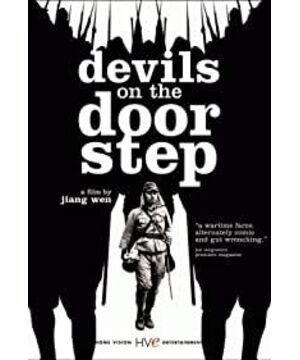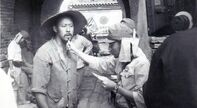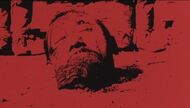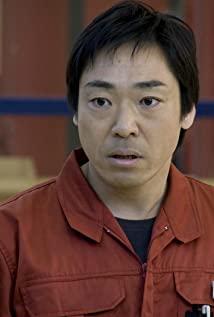1. The audiovisual language
was shot with black-and-white film, and the last piece of red was a special effect ["Schindler's List" also used black-and-white film, but it was made in black and white with color film in the later stage] This is the same as Jiang Wen's era People are related. The black-and-white war films that I have watched since I was young are similar to those of "Tunnel War".
The design of the lens: For more than fifty minutes, I used Yuer's perspective to see Ma Dasan, expressing his inner fear, full of comic color, and making the audience feel compassionate and lovely. Use a lot of close-ups to highlight the actors' performance. The treatment of light, Ma Dasan accepted the villagers' meeting held by the Japanese prisoners, Cui Jian scored the music, but there is no shadow of rock and roll (willingly go his own way)
2. The performance of the line design processing
Jiang Wen's transparent eyes showed that Ma Dasan, a simple farmer, used dialects (Hebei Tangshan, Jiangsu and Zhejiang, Northeast) to reflect the characteristics of the time (Hebei rural life) and has a certain documentary nature.
3. The film style
"there will be a comedy element in the tragedy", "the real master of drama can mobilize all the aesthetic elements of the person", "The Devil is Coming" blends many tragicomic styles, borrowing the recurring effect of the military symphony winner melody. In the example film, "I have one hand in one hand, and pinch the dead..." At first it was the wife of the thief, and then the Japanese devils. In the end, it turned out that he, a physically disabled old man, became the only person who rebelled against the Japanese. This method of expression has the absurd style of modern Western drama.
The absurdity and humor were particularly prominent in the last paragraph. The black donkey suddenly ran out. When Captain Gao spoke, Zhu walked through the feet of the soldiers, chaotic scenes.
4. Characters
"I want to shoot "The Devil Is Coming", in fact, I want to summarize my 35 years of feelings about fear, love, and death. What causes fear? In order to get rid of this idea, should I stay away or die? Near death?"
—————————— "My Camera Doesn’t Lie"
Ma Dasan: Duty, kindness, cleverness, wiseness, self-preservation, not dare to take responsibility, representing a typical Chinese people's philosophy of survival, pulling a group of people into the water, taking responsibility for everyone, but not responsibilities for the people, and died with a confused smile.
The farmers in the small mountain villages of Hebei did not face the war head-on. Thousands of years of peasant logic allowed them to treat captives kindly, but in the end they discovered that their ideology and moral code of conduct were not compatible with the logic of modern warfare.
Hanaya Kosaburo: He appeared with the spirit of Japanese Bushido, but was afraid that he would not die violently. The psychological change of Hanaya is the director's skill. Hanaya's later cherishment of life was based on the villagers' preferential treatment to him as a captive.
"Whether it is a Japanese or a Chinese, what has been described and questioned here is just being restored to the fragile posture of human beings." — — The Japanese "Asahi Shimbun"
finally Ma Dasan was beheaded by Hanaya, Ma Dasan looked up at the camera
translation of Huawu: Representing a Chinese with a bit of culture, his mind turned quickly, and a representative of China's inferiority. Provoking discord and being looked down upon by the boss, "China Dog". And look down upon the lower-class soldiers who came from Japanese farmers like Hanaya. In the end, laughing when he was tortured was a mockery of the current situation and a mockery of his own translation.
5. The theme is complex and multi-directional
<1> The contradiction between the characters and the animal nature
<2> The contradiction between the logic of peace and the logic of war
<3> The contradiction between political laws and the logic of folk emotions The
film shows the side of aggression, not a positive resistance. The righteousness is awe-inspiring, and there is no image of tall, big, and complete. Instead, the Chinese peasants are lagging behind. They are only profitable and only have immediate benefits. This may be the reason for being convicted of "reactionary films."
The reason why Ma Dasan dare not kill is because of the religious superstition typical of Chinese farmers. Yu'er is pregnant with Ma Dasan's son, and no one wants to get dirty. It is precisely because of this superstition that China's (relative) peace has been formed.
Putting a section of the Japanese devils into the perspective of human nature analysis, the Japanese devils also have fullness of character, cruelty, fear of death, and cowardice. It shows the human side of the Japanese devils, especially Nonomura giving sweets to the children in the village every day. There is no conflict with the villagers. The final outbreak was the suggestion and provocation of the officer. Because of the stimulation, he killed his favorite child frantically, portraying the three-dimensional plumpness and humanity, and the Nonomura that he looked at from his heart may also be part of the "reactionary".
The director's vision transcended national grievances. From the perspective of human nature, the villagers did not want to ruin their lives and the lives of others. It was this kindness that led to the killing. From a humanistic point of view, people and their lives are above everything else. People must treat others well to survive in society, but he thinks of their survival and does not let me survive. Human nature and animal nature coexist in human beings. To be kind is that human nature triumphs over animal nature. Therefore, all behaviors should be based on respect for life. Ma Dasan and their kindness were beaten to bloodshed in the war. The humanity of its performance.
Artist politics, the fetishism among the news media, artists do not have their own ideology. Artists think that they are judges by experiencing life. This is exactly the critical attitude of seeing and hearing about their profession. In the film, Marathon entered the city for the second time and saw different jokes sung by artists at the gate of the city.
View more about Devils on the Doorstep reviews










